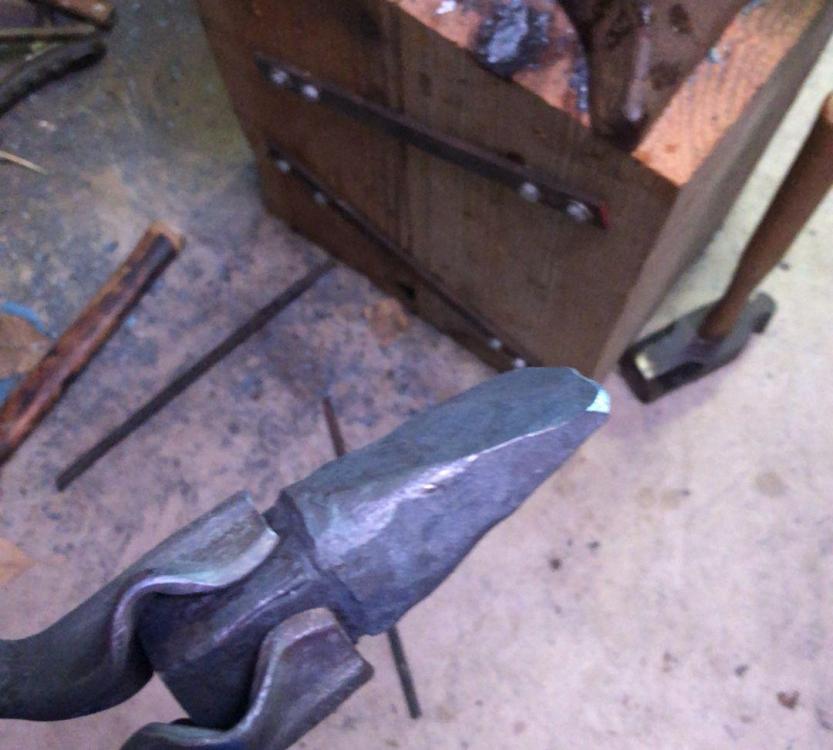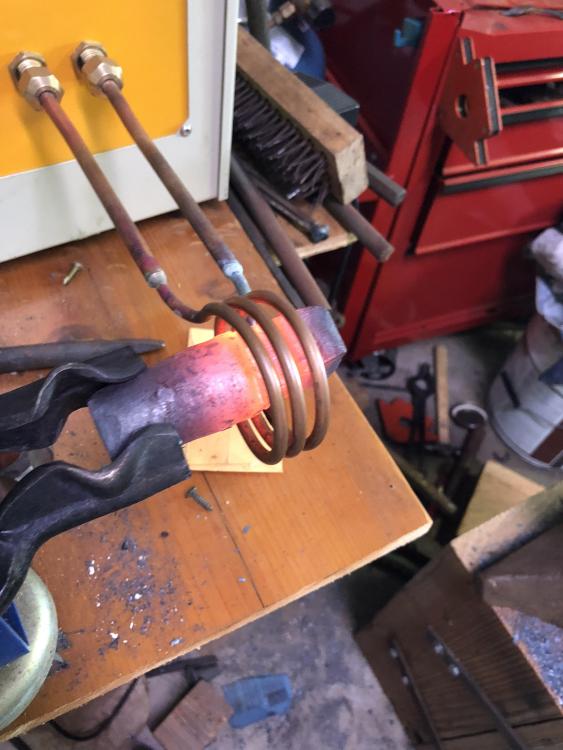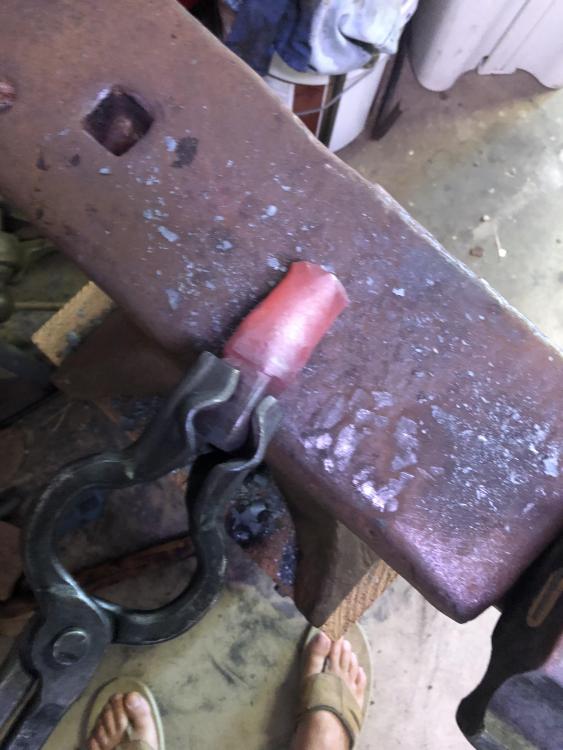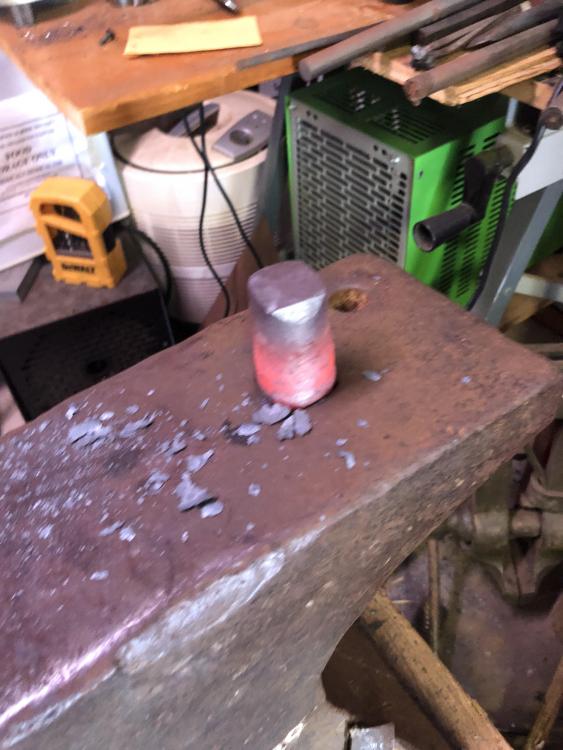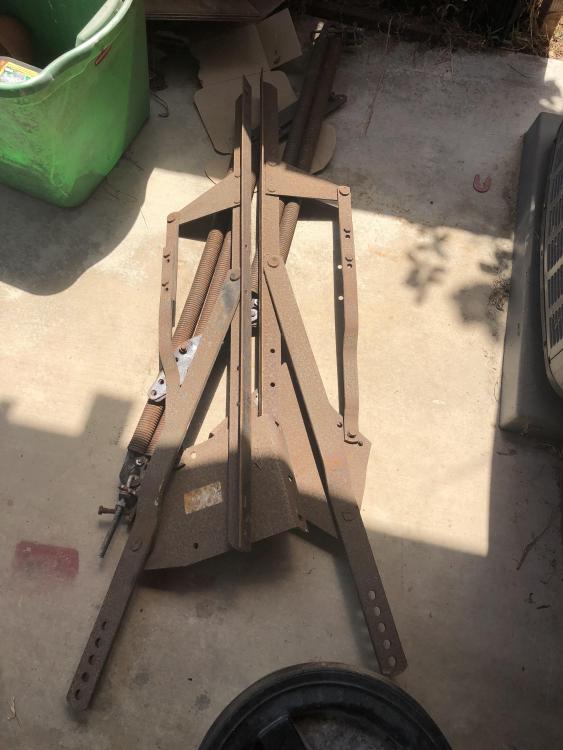
bajajoaquin
Members-
Posts
495 -
Joined
-
Last visited
Content Type
Profiles
Forums
Articles
Gallery
Downloads
Events
Everything posted by bajajoaquin
-
Experience with Blacksmiths Paradise?
bajajoaquin replied to bajajoaquin's topic in Anvils, Swage Blocks, and Mandrels
Interesting. I was unaware that my location affected the business experiences of others. Noted for he future. -
There was a reference to a 1000-lb anvil in another thread, and I followed up on it, finding the Blacksmith’s Paradise shop. Those anvils are pricey, but less expensive than what I can find in my area. I’ve also been having issues with the beat up edges of my pre-1850 Hill. So.... anyone buy from them? Any opinions on working with them? (no, I’m not in the market for that 1000-lb monster, but I wish I were!)
-
What did you do in the shop today?
bajajoaquin replied to Mark Ling's topic in Blacksmithing, General Discussion
Can you elaborate? -
W-2 Anvil Face vs Avg Anvil?
bajajoaquin replied to Avadon's topic in Anvils, Swage Blocks, and Mandrels
Any update here? -
What did you do in the shop today?
bajajoaquin replied to Mark Ling's topic in Blacksmithing, General Discussion
Wow. Those are bigger than I thought given the first picture. Seeing the tapestry hung from the part I thought was a finial really changed my sense of scale! I got the rough forging done on my hardy (hardie?) cut off today. I wore a steel thong, and it was very uncomfortable, but I felt safer. I'll planish it a bit to make it look nicer, and then file it to finish. It looks like I didn't get the twist completely out of it. I'll just tell everyone that it's just canted enough to fit the curve of my wrist. It's a feature, not a bug. -
Yes, I'd like a hardy (hardie?). I can drill through 3.5" but not 7". I could drill 3.5 then 3.5 and weld together. Or I could put a 1" spacer between the blocks and build up weld between them to make an 8" wide by 7" tall striking anvil of about 210 lb. Sounds like the main reason for the orientation is drilling a hardie and lightning strikers, then.
-
Working on my hardie cut-off, I've been using the hardie hole on my Hill 185-lb anvil. The process has gotten me to start thinking about making a striking anvil/portable hole. I have three blocks of steel I bought some time back that are each 13.5" x 7" x 3.5". A calculator says they weigh 94 lb each. Most images I've seen of striking anvils I've seen show them laid out so that mine would have the 13x7 plane flat, and it standing 3.5 high. This makes sense, as it's easiest to drill or punch. But wouldn't the efficiency of the anvil be best served by being on an edge, and being 7" or even 13" high? Most striking anvils I see are in the same weight range as my blocks. Heavier anvils are more efficient. Is the reason for relatively light anvils cost and ease of finding materials, or is there some other reason? I've got a light-weight (180-amp) MIG welder. I could probably figure a way to weld two blocks together, but I'd not have really deep penetration unless I just built up a big gap with wire. That would be a lot of wire. Worth while?
-
Lol
-
Show me your Bottle Openers!
bajajoaquin replied to Arbalist's topic in Blacksmithing, General Discussion
Not sure how those got in reverse order, but.... Anyway, I think that a woman with a few tattoos and magenta hair is pretty solidly within the normal range of fashion sense. It's a bit of a stretch to say there's much to be read there. From her instagram, she seems to like octopus tentacles like we like leaves! There are a lot of them. The other thing I saw was how she integrates wood into her work. There's a tentacle inset "softly" into wood, and a "don't panic" button also with the inset softened. It's a really nice look. Kind of like the wood was a soft substance, and she pressed it down. Maybe the wood version of how Elizabeth Brim made soft-look steel pillows? -
What did you do in the shop today?
bajajoaquin replied to Mark Ling's topic in Blacksmithing, General Discussion
yeah... "thong" barely covers a different body part in the US. -
Not really. I started a thread that got moved to safety section. Basically I forged my hot cut without cleaning off the cuttting fluid I’d used when I cut it in the bad saw. Not an awesome decision. All worked out, but still....
-
What did you do in the shop today?
bajajoaquin replied to Mark Ling's topic in Blacksmithing, General Discussion
I paid extra for the OSHA-approved flip flops. Car is long gone, but the axles were from a CV joint replacement. Cheaper to buy the whole CV/axle assembly than to disassemble and replace just the joint. So I ended up with axles. (If I do more than a couple heats, I put on leather shoes. I work from home and I put my office in my workshop. Most days the forge stays idle but every now and then I get a conference call where I have to attend but I don’t really have anything to add. It’s a bit awkward when I forget to mute myself.) -
What did you do in the shop today?
bajajoaquin replied to Mark Ling's topic in Blacksmithing, General Discussion
I got a little bit of forging done on my hot cut. It’s the half shaft from my wife’s old car. I only get 10 or 20 minutes at a time to forge so I get a couple heats and then put it away. -
No doubt you’re a bigger idiot, but I’m still an idiot. No, sorry, I can’t leave it like that. You’re not the one who forged cutting fluid today. I’m the bigger idiot.
-
Heating Rapid-Tap (or: What Makes Phosgene?)
bajajoaquin replied to bajajoaquin's topic in Safety discussions
Yes, there were separate questions in there: 2. what is the component that makes phosgene? Seems to be chlorine, right? 1. Anyone have an opinion on what's in RapidTap? And yes, I stopped what I was doing as soon as I realized I was smoking the RapidTap. I just decided to ask the follow up question about a known killer while fumes were on my mind. Thanks! -
I'm rooting for you. Not just for you, but because I still regret not buying the big steel blocks/plates I had a chance at several years ago. I picked up three 80-lb blocks, but declined the 700- and 1000-lb monsters. I'm an idiot.
-
Someone took apart a garage door and left it in the alley. (That’s our local signal for “hey, please take me”).
-
I was cutting off an axle shaft to make a hot cut hardy today, and I squirted a bit of RapidTap on the bandsaw blade. Popped the part into the induction forge, and it started smoking. Doh! The doors were open with a cross breeze, and I didn't get much in my face before moving out of the way and letting it cool off. I don't feel any negative effects, but I'd rather not do that again. Anyone know if RapidTap is (relatively) safe to burn off? And more specifically, what is it in brake cleaner that makes phosgene gas? I wasn't using brake cleaner, but I know that's gnarly stuff and you don't want to weld it. I want to know what to look for as an ingredient in the future.
-
What did you do in the shop today?
bajajoaquin replied to Mark Ling's topic in Blacksmithing, General Discussion
Just half way through this thread, but thought I’d take the time to comment on this way-back post. My mother’s best friend says “the days are long, but the years are short.” So true. Mine are already five and two. -
Damascus welding in induction forge
bajajoaquin replied to jason0012's topic in Induction Heating, Oil forges, etc
I haven't done pattern welding (or any welding) with my induction forge, but I'd like to comment on some of the things. As has been mentioned, you will get scale in an induction forge. It's a byproduct of heating in an oxygen environment. It may be less than you get in a coal or propane forge, if your fire management is allowing a suboptimal mix. Mostly, it's low scale because it's consistent. There's no combustion using up fuel/oxygen which changes the chemistry of the air. It does, indeed, heat from the outside in. But so does a coal fire or a propane forge. Induction has the ability to penetrate past the surface layer, depending on how you set the machine up, but for all practical purposes, it heats from the outside in. My forge is underpowered for 1" stock, but that's not really any different than trying to forge in any other forge that's too small. So the main difference here could be said to be that induction has a higher cost of entry per unit of thermal input. My understanding is that there are coatings you can put on the coils to minimize the effects of flux. Rectorseal was the brand recommended by the gentleman at Mettleworks. The main impediment I see which hasn't been mentioned is that induction heating really only works in a narrow range of distance from the workpiece to the coils. When you pattern weld, you start with a billet which is very fat and then gets drawn down very thin before becoming very fat again. This would mean you might have a difficult time designing coils to fit. Not unsolvable, but that would be a challenge to overcome. I missed this in my reply. Coils will only heat where they "cover" the stock. There's probably some dispersion within the general range of inductance, but it's not major. So you would either need to have long coils, or move the piece evenly through a shorter one. There is a fairly complex interaction of the conductivity of the workpiece and the coils, the power, frequency, and other factors, so it's not something you can simply say "I'm going to add an additional loop" and have necessarily work right away. Doesn't mean it won't, or you can't, but its something you would have to work out. -
I try not to start topics that seem purpose-built to get replies that tell me I'm an idiot, but here goes.... I recently got two MacPherson struts so I could use the springs for stock. Thing is that they're still assembled, and under spring load. I don't have a spring compressor. I do, however, have an induction forge. Since I can heat one section of coil without risk of heating the shock body or the plated chrome parts to dangerous levels, could I just heat the spring to a forging heat, which would cause the spring to deform and eliminate the load? Springs are painted, not otherwise coated. As a bonus question, is there anything I can do with the chromed shock shaft? I had always figured there's no way to get the chrome off safely.
-
Anvil face is not level.
bajajoaquin replied to agblea's topic in Repairing and Modification to Anvils
But again, who cares if it’s a half inch out of level? -
Anvil face is not level.
bajajoaquin replied to agblea's topic in Repairing and Modification to Anvils
He’s surely not going to use it unaffixed whether it’s level or sagging, right? That will walk all over the place. Once fixed to the stand with any number of methods (chains, bent tabs, silicone, duct tape.... whatever) the level ness won’t matter much. -
Anvil face is not level.
bajajoaquin replied to agblea's topic in Repairing and Modification to Anvils
Why not just use it as is? -
Yep. That trick doesn't work on my phone. Good to know when I'm replying by computer, though.
